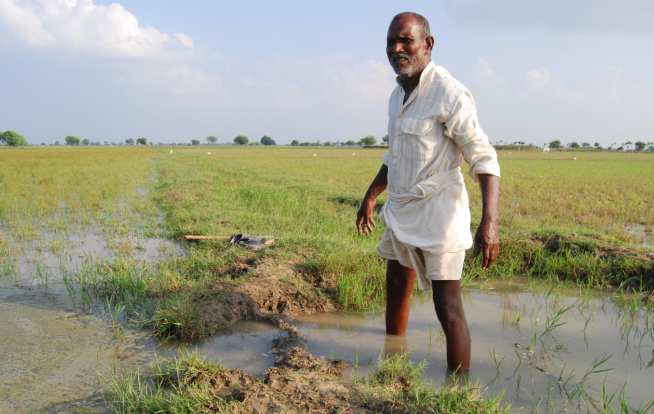Water resources in India - the story of Ganges basin
Dr Ana Mijic, Lecturer in Urban Water Management in the Civil and Environmental Engineering Department.
The basin of the river Ganges in northern India is one of the largest water catchments in the world in which water resources are dominated by large-scale groundwater systems. Human influence, especially agricultural water use, is already having an impact on water availability in the Ganges basin.
The story goes back to the middle of the last century, when the Indian subcontinent started what is now one of the largest environmental changes in human history, India's green revolution: the transformation of barren and forested land into heavily irrigated areas. Although it enabled India to be self-sufficient in food production, the green revolution increased the exploitation of water resources, including the vast groundwater aquifers of the Ganges basin. The variation in recharge due to the land use change, and cheap and hence unsustainable water abstraction for irrigation put a severe pressure on the local water resources. Over the last few decades groundwater levels in the Ganges basin have declined steadily. Satellite data shows that groundwater levels declined by an average of one metre every three years between 2002 and 2008.

Water availability in the Ganges basin is highly dependent on the summer monsoon. Approximately 80% of India’s rainfall occurs during the period from June to October. While there has been no overall change observed in seasonal mean rainfall, there has already been a reduction in the frequency of light-to-moderate rain days, and an increase in the frequency of heavy rain days.
However, in the Ganges basin, precipitation can be influenced by the dryer soils expected as a result of climate change. This can affect cloud formation and monsoon variability, potentially altering the timing, intensity and duration of the summer rainfall. This could significantly affect the amount of water available to farmers. However, there is still a lot of uncertainty in the expected changes to monsoon rainfall over South Asia.
Glacier melt impacts are negligible in the Ganges basin because a large proportion of the water comes from the Monsoon rains. Galcier melt is more important in the drier Indus basin, located mostly in Pakistan and Northern India. In the Indus, research has shown there will perhaps be a short term increase in water availability this century as the glaciers decline. After the glaciers have decreased in size significantly, it follows that there will be a decline in water availability from the seasonal melt cycle.
The pressure on water resources in the Ganges basin will further increase in the near future for two main reasons. Firstly, population in India is expected to rise to 1.5 billion people by 2050. Secondly, rapid urbanisation and economic growth will increase the demand for water, reducing the water available for agriculture.
The first step in reducing this vulnerability is using computer models of an atmosphere-surface-groundwater system to understand the climate impacts on water availability in the area and to assess any relevant climate feedbacks. This will enable evaluation of natural and human influences on water resources in the basin. Finally, increasing competition for water from a variety of sectors will require appropriate integrated resources management for India’s sustainable future.
For further references please see the “Hydrometeorological feedbacks and changes in water storage and fluxes in Northern India” project website.